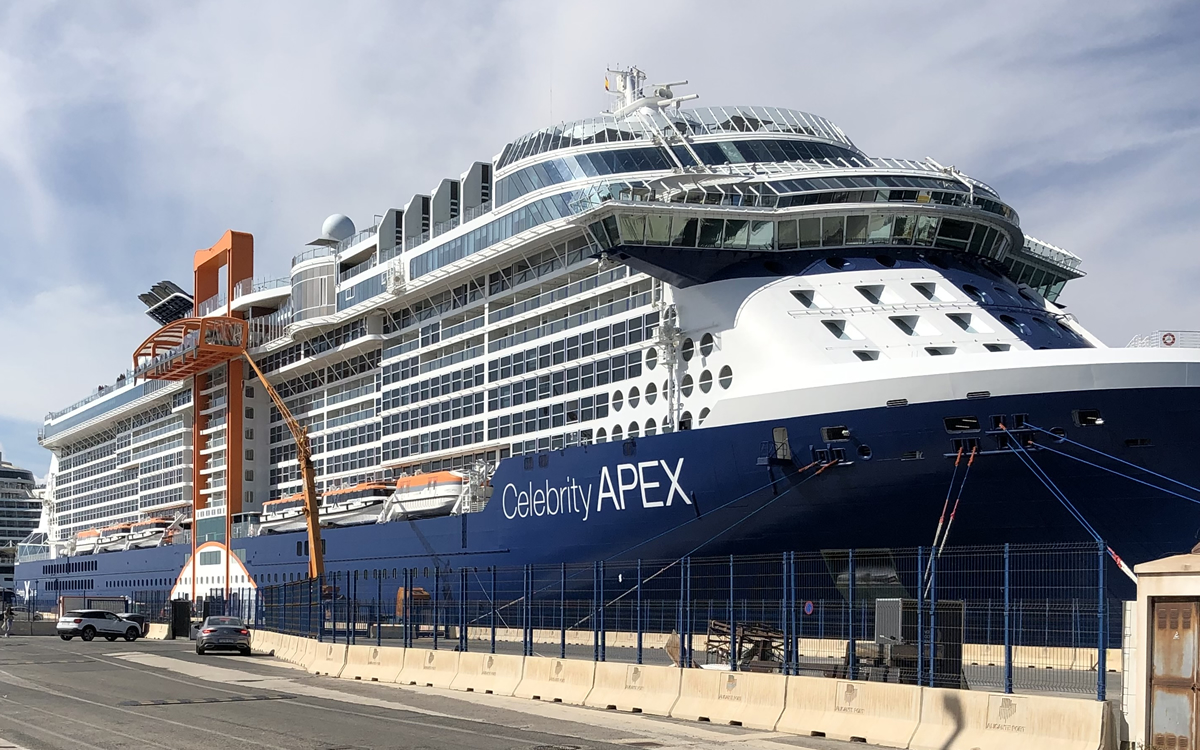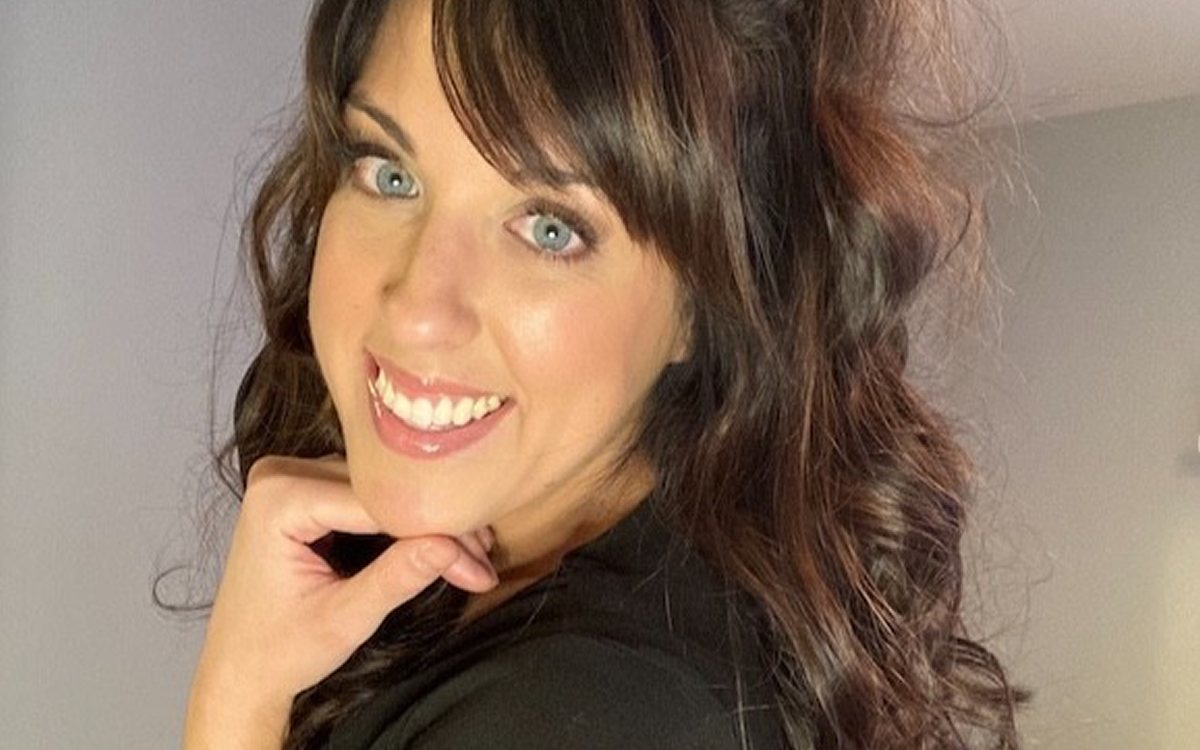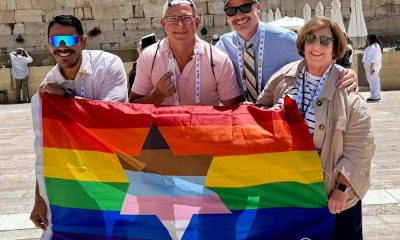Blade Blog
Health report gives lawmakers powerful new tools
Landmark study hailed as boost to care for LGBT patients
Kenneth Johnson and James Massey met on June 28, 2000, and within four years they had become domestic partners and finalized the joint adoption of their son. Then in 2006, James suddenly collapsed from a cerebral hemorrhage at a CVS drugstore in Southwest D.C. and was rushed to Howard University Hospital.
Kenneth frantically tried to locate James upon arriving at the emergency room moments later, explaining to the nurse on duty that he was James’ partner of six years. The nurse responded, “You’re just the friend; I can only release information to immediate family members.” As a result, Kenneth was forced to leave his partner and dash home in rush-hour traffic to retrieve James’ living will and medical power of attorney documents to prove both their relationship and that Kenneth had the authority to make medical decisions on his partner’s behalf. But during his absence those critical decisions were made without Kenneth’s consent – counter to James’ wishes.
James died the next morning and all of the unnecessary suffering that occurred during the waning moments of his life could have been avoided were LGBT people treated the same as heterosexuals in the eyes of the American healthcare system.
Similar stories, affecting countless LGBT Americans, play out in large and small ways each day in hospitals throughout the country. According to the Human Rights Campaign’s most recent 2010 Health Equality Index (HEI), sexual minorities are still commonly omitted from most hospitals’ patient non-discrimination policies, with 93 percent of 200 of the nation’s largest healthcare facilities failing to include “gender identity” and 40 percent leaving out “sexual orientation.” The HEI also revealed that a majority of the 178 American hospitals and clinics evaluated fell woefully short in addressing the health needs and basic rights of LGBT people on four key measures: patient non-discrimination, visitation rights, cultural competency training and employment non-discrimination.
Compounding this problem, LGBT youth are more than three times as likely to commit suicide as their heterosexual counterparts and are at a significantly increased risk for smoking, abusing drugs and alcohol and engaging in unprotected sex. Recently, the CDC revealed that gay and bisexual men are 44-86 times more likely to become HIV-positive in their lifetimes than heterosexual men and account for 53 percent of new infections nationwide. As a result of this confluence of disparities, when LGBT people are misunderstood or ignored when they are in greatest need of compassion and are at their most vulnerable, the yawning divide only widens between the care LGBT people disproportionately need and the care they actually receive.
However, after last week’s release of a new report by the Institute of Medicine (IOM), “The Health of Lesbian, Gay, Bisexual and Transgender People: Building a Foundation for Better Understanding,” this reality may soon change, as health officials begin to research the magnitude of LGBT health disparities and close the gaps identified.
Although the IOM has been previously commissioned to review the state of health of various sub-populations, this report marks the inaugural comprehensive assessment of the entire LGBT community – establishing a baseline on which to establish a future research agenda. In 1999, the IOM released its first report on a sexual-minority population, “Lesbian Health,” which demonstrated a glimpse of the disproportionate toll that cancer, obesity, depression and substance abuse take on this population.
However, in the years since the release of the 1999 report, health disparities suffered by lesbians – as well as gay, bisexual and transgender Americans – have remained common, from accessing care at a clinic where registration forms and electronic medical records lack options to identify as having a particular sexual orientation or relationship status to overt acts of discrimination, such as health providers refusing to treat patients because of their gender expression.
LGBT advocates welcomed the commissioning of this IOM Report by the National Institutes of Health (NIH). At the formal report release on March 30, the IOM hosted a panel of committee members who were responsible for authoring the report and determining its seven key recommendations.
The 17-member committee’s five-fold charge was to: conduct a review of the state of the science on the health status of LGBT populations; identify research gaps and opportunities; outline a research agenda; discuss research methods; and consider research training needs to foster the advancement of knowledge about LGBT health. The committee held three public meetings over 18 months in San Francisco and Washington, D.C., to solicit feedback from the community and undertook a literature review of the available evidence on LGBT health.
The findings were synthesized and discussed by committee members to determine their priority recommendations. Fourteen external individuals, chosen for their diverse perspectives and technical expertise in LGBT health, reviewed the final report in effort to minimize bias. In short, the process through which the IOM assembled the report was rigorous and scientific, ensuring its integrity as a guide to improving LGBT health research and, by extension, LGBT health outcomes in America.
The primary recommendation instructs the NIH to “implement a research agenda designed to advance knowledge and understanding of LGBT health.” Importantly, the committee acknowledged that in meeting its charge to identify existing gaps in LGBT research, it found the holes to be so extensive that a complete conceptual overhaul of the existing research agenda was in order. Also of note, most of the research performed to date was on adult lesbians and gay men, with a dearth of evidence available on bisexual and transgender individuals that would need to be addressed.
As such, an approach was prescribed to provide a new conceptual model for how research should proceed. This model delves beneath the traditional four LGBT monoliths, to explore more nuanced sub-populations and cross-cutting perspectives shared by these groups. In particular, use of a “life course framework,” which focuses on the continuum from childhood to death and emphasizes inclusion of longitudinal studies and age groups that have been historically ignored, ensured greater representation of youth and elderly populations.
Additionally, an emphasis was placed on including a minority stress perspective, meant to incorporate the role that stigma plays in LGBT health, as well as an intersectional examination of LGBT people in the context of racial, socioeconomic and geographic diversity. Finally, committee members also stressed the need to examine the social ecology of the LGBT community and its interplay with health outcomes. Layered on top of this conceptual framework, five priority areas of research were identified to include: social influences; healthcare inequities; intervention research; transgender-specific health needs; and perhaps most importantly, demographic research.
The struggle to improve our health and safety every time we interact with the healthcare system hinges on us being counted. In our data driven world, ensuring LGBT Americans can demographically identify as such is at once a simple and monumental step in improving the quality of care LGBT patients receive. Addressing this matter, subsequent recommendations include collecting data on sexual orientation and gender identity in federally funded surveys administered by the Department of Health and Human Services (HHS), as well as enabling health providers to include this information in patients’ electronic health records.
One of the committee members for the IOM report, Dr. Robert Garofalo, Associate Professor of Pediatrics at Northwestern University’s Feinberg School of Medicine and Director of Adolescent HIV Services at Children’s Memorial Hospital in Chicago, stated that the “inclusion of sexual orientation measures into federal surveys, such as the National Health Interview Survey, would signify a sea change for the LGBT population, because it will allow us with some degree of precision to finally be counted in a way that makes assessing our health needs and disparities feasible.” He continued, “The science is at a place where the inclusion of such questions could be done with relative ease, if there were the political will to do so. If this occurred it would be the biggest game changer in LGBT health imaginable.”
Above the IOM seal, emblazoned across the cover page of this report, runs Goethe’s quote, “Knowing is not enough; we must apply. Willing is not enough; we must do.”
To this end, the federal government has already taken some encouraging steps forward on behalf of LGBT Americans. Last year, the passage of the Affordable Care Act dramatically increased health coverage for disproportionately uninsured LGBT individuals. More specifically, President Barack Obama also issued a Presidential Memorandum on Hospital Visitation, which addresses the rights of patients to designate visitors regardless of sexual orientation or gender identity.
On April 1, Secretary Kathleen Sebelius issued a new policy explicitly requiring HHS employees to serve all individuals who are eligible for the department’s programs “without regard to any non-merit factor, including… sexual orientation [and] gender identity.”
And now, on the heals of the release of the IOM Report, Dr. Meredith Temple O’Connor, the newly appointed Acting LGBT Coordinator at the NIH, who also spoke at the panel last week, said she is poised to establish an internal structure to deliberate on the report’s findings and begin to fill the identified gaps of the report’s prescribed LGBT health research agenda.
At this critical juncture, the scientific community has spoken, backed by evidence presented in the IOM Report. As a consequence, policymakers will now have the knowledge and tools they need to continue to target and expand resources to improve the health of LGBT communities. But as Dr. Garofalo pointed out, it is now a matter of political will to ensure that LGBT Americans receive the sensitive, quality care they deserve.
Blade Blog
Cruising into Pride
Celebrity holds firm as a proud corporate supporter of LGBTQ community

As you know if you have read my columns and blog posts, I love cruising. The kind where you are on a river or the ocean. Today in both the United States and around the world the LGBTQ community is facing difficult times. Attacks are coming fast and furious. There are few places where members of our community can feel totally safe these days.
One of those places is on a cruise ship that values the community. That is what I have found whenever I travel on a Celebrity ship. Today, they are going even further in letting the world know about their respect for the community. They happily advertise Pride at Sea. Of course, they are doing it to attract LGBTQ passengers and their dollars, but that’s great in this day and age, when a company is willing to step up proudly, wants our business, and will do everything they can to make us feel both wanted and safe. That is what Celebrity Cruise Lines is doing.
I want Pride to be celebrated not just in June, but every month. But I am excited about the June celebrations whether hosted in D.C. by Capital Pride, or on the high seas. While many of us will be at the D.C. Wharf, on June 10 to help the Washington Blade celebrate Pride on the Pier with spectacular fireworks, those who miss that and are on a Celebrity ship will be part of a Pride celebration as well. Their ships will all celebrate the month in various ways including flying a LGBTQ Pride flag.
Celebrity has invited my friend, entertainer extraordinaire, Andrew Derbyshire, to lead the celebration on the Edge on June 13, in Ibiza. He recently quoted Celebrity, “In honor of Pride month and our continuing commitment toward fostering positive and authentic partnerships within the LGBTQIA+ community, Celebrity Cruises is raising the Pride flag to celebrate acceptance, unity, and support for the community. Each June, Celebrity Cruises hosts our annual Pride Party at Sea. Every ship takes part in the celebration that brings our crew and guests together to honor and celebrate Pride.” Andrew added, “I am happy to announce I will be flying to Ibiza on the 13th of June for a few nights, to host Pride on the Celebrity Edge, with my friend and captain, Captain Tasos, and the amazing team on board.” Andrew, like many of the entertainers I have seen and met on Celebrity ships, is encouraged to be who he is, ‘out’ and proud.
The Edge will kick off Celebrity’s fifth annual Pride Party at Sea during its June 10, 2023, sailing. “The party will take place in tandem across the award-winning Celebrity fleet, with each ship ‘handing off the party baton’ to the next, to keep the festivities running across hemispheres and time zones. A variety of multi-generational LGBTQ+ focused programming will take place throughout the month of June. Together, officers, staff and crew around the world will participate in Celebrity’s signature Pride programming.”
You should know one of the things straight couples could always do on a Celebrity cruise is have the captain marry them. Now, since same-sex marriage became legal in Malta, where most Celebrity ships are registered, their captains can legally marry same-sex couples. After this happened the first legal same-sex marriage at sea, on a major cruise line, occurred on board Celebrity Equinox in January 2018 when the captain married Francisco Vargas and Benjamin Gray.
Celebrity is a Florida-based company, and along with Disney, they are standing up for the LGBTQ community. They have been a Presenting Sponsor of Miami Beach Gay Pride for four years in a row. They continue to advertise their collaborations with gay cruise companies like VACAYA, which has charted the Celebrity Apex for a cruise of the Caribbean in 2024. The ship will be sailing with a lot of happy LGBTQ cruisers on Feb 17-24, 2024 for seven nights from Fort Lauderdale to Puerto Rico, St. Croix, and Antigua. For anyone who hasn’t been on the Apex, it is an amazing ship. While not during an official Pride month I will show my Pride along with many other LGBTQ travelers on Celebrity Beyond this October out of Rome, and on Celebrity Ascent in October 2024 out of Barcelona. The Ascent hasn’t even set sail yet.
Let’s hope other companies will follow Celebrity’s lead and value the LGBTQ community. We are entitled to live our lives safely and to the fullest, as who we were born to be.
Peter Rosenstein is a longtime LGBTQ rights and Democratic Party activist. He writes regularly for the Blade.
Blade Blog
Shawna Hachey of Celebrity APEX on what makes a good cruise director
A love of people is a must

The position of cruise director on any ship is one of the most important, especially on a transatlantic voyage, like the recent one I took on the Celebrity APEX. So much of what people remember is the entertainment. Shawna Hachey is a great Cruise Director and I had the opportunity to sit and chat with her during the cruise. The job keeps her jumping and she is one of the busiest people on the ship. Shawna has a great bubbly personality. She likes people, which is a requirement for that position.
Shawna shared she is from New Brunswick, Canada, and has come a long way from there. She has now been with Celebrity for nearly thirteen years. I kidded her that meant she must have begun when she was ten. She is actually a very young looking thirty-five. She graduated from the University of New Brunswick with a degree in fashion design, a passion of hers. Shawna told me when she graduated, she had the options of a job in the fashion industry, or working on a cruise ship. Her dad was the one who suggested she go see the world and she ended up falling in love with cruise ships.
It is not an easy job. Her schedule is four months on and four off. The recent pandemic had her off the ship for a year and a half, during which time she worked in a government job back in Canada until Celebrity called her back. Her first contract after the pandemic, because of staff shortages, was eight months on and two off. But she loves the job.
Shawna did the usual for someone in her position and worked her way up the ranks from activity host, to activity manager, to cruise director. At one point she did something different and had a stint as a school teacher in London for a year, teaching kindergarten, but came back to cruising. I can just see her with those kids and am sure she was great.
As Cruise Director she is responsible for organizing all the entertainment on the ship. That includes lectures, Zumba, game shows, silent disco’s, evening parties, resort deck parties and other games, as well as the back of house and theater tours. She works to ensure every traveler has something to keep them busy and having fun. As Shawna told me, that is always a little harder on a transatlantic cruise with so many sea days. But judging by the comments on the ship by so many of the people I met, she was doing a great job.
The Cruise Director doesn’t get to choose all the talent, as Celebrity does the booking, but Shawna can and did request some approved acts. She loves working with those like the incredibly talented, Andrew Derbyshire. Many of us were excited he was going to be on our cruise. I first met Andrew, and wrote about him, last year when I was on APEX. He is an amazing entertainer. Shawna explained to me with the big shows like Crystalize and Tree of Life, Celebrity now produces those themselves and interviews talent for them around the world. One of the cast members in those shows, Nate Promkul, I predict will end up a star on Broadway. With the individual artists, their agents submit them to Celebrity, who then hires them for all their different ships.
Before working on APEX Shawna has worked on a number of other Celebrity ships including Solstice, Reflection, Equinox and Silhouette. Shawna shared a story with me about Celebrity. They have always had a lot of crew from the Ukraine. Apparently, after the war began any crew members from Ukraine still working, were able to bring their families who could get out of Ukraine on board to live with them. This is a wonderful humanitarian thing to do.
I enjoyed talking to Shawna and urge any cruiser on the APEX to say hello when you are onboard. She will always have a big smile for you.
Blade Blog
Meet Captain Nikolaos Christodoulakis of the Celebrity APEX
Reflecting on life aboard a ship during COVID

It really was a pleasure to chat with Celebrity APEX Captain Nikolaos Christodoulakis who invited me to the bridge for a conversation. I learned he is quite an amazing man.
Captain Christodoulakis told me Celebrity is the only cruise company he has ever been with and joined them twenty-eight years ago in 1994. While still a young man of 47 he has already been a captain for 12 years. In one of the many interesting lectures during the cruise, we were given a talk on how one can become a captain. How one moves up the ranks at Celebrity. We were told about all the education and testing required. The speaker, who was not yet a captain, kidded he would reach that goal by 2080. He then told us jokingly about the exception for those of Greek extraction. He said they received their captain’s certificate along with their birth certificate. When I mentioned this to the captain during our conversation he laughed and assured me he did have all the needed education and tests.
Captain Christodoulakis told me proudly he is from the Island of Crete, and still lives there with his wife and eight-year-old daughter. A captain with Celebrity is on a schedule of three months on, and three months off. He said he loves those three months off when he can be with his wife and daughter, and the rest of his family, back on Crete. I told him I had been to Crete many years ago and thought it was beautiful and asked him if he had ever walked down the famous Samariá Gorge and he said he hadn’t.
Over his years with Celebrity, he worked on many ships, including Horizon and Century among others. His most recent ship was the Reflection, which he captained during the COVID pandemic. That was not an easy time for the cruise line. He was with Reflection for three years and during the pandemic spent part of the time with the ship sitting in the Bahamas, with a crew of less than 100. Just enough to keep the ship ready to sail again when he could welcome passengers back. I told him I was on the APEX last year on a transatlantic cruise out of Barcelona with only had 1250 passengers and a crew of about 1,000. He told me on this cruise there were 2340 passengers and a crew of close to 1200. The APEX can accommodate up to 3,400 passengers with a crew of 1,250. The captain agreed staffing back up has been difficult and complimented the Celebrity HR department who he said has been working overtime recruiting crew.
I asked him about protections for the crew during the pandemic and continuing today. He said Celebrity has been really good about that and all crew on the APEX have been vaccinated and boosted against Covid and during this transatlantic cruise they were all getting flu shots. On this trip the crew was required to wear masks for their safety. During the sea days they were allowed to take them off when outdoors, so we could see their smiles.
I then asked him what he wants to do next after he stops being a Captain. He told me he loves being a Captain and really can’t see another career. He did tell me once he retires, years from now, maybe when his daughter is in college, he wants to get an RV, and drive across Europe with his wife, seeing all the sites at a slow and leisurely pace. Then would like to do the same going across the United States stopping at all the national parks. Sounds like a great retirement. I asked if he often leaves the ship in the ports where it stops. He says he does if his wife and daughter are on board visiting, and anticipates them joining him for the upcoming holidays. When they aren’t with him, he gets off if he can get to a beach, or a place to swim and dive, which he loves.
I then mentioned there was a party that afternoon my friends and travel agents, Scott and Dustin, with My Lux Cruise, were hosting in the Iconic suite. He said he would enjoy coming to that. I thanked him for taking the time to chat, said I hope to see him at the party, and left the bridge.
I didn’t say anything to Scott or Dustin about inviting him. Not only did he come but brought the Hotel Director, Christophe, with him. They were incredibly open and gracious, taking selfies. Christophe told us he would be on the BEYOND when we do our next transatlantic cruise in October 2023.
-

 Sports5 days ago
Sports5 days agoTrans cyclist’s victory sparks outrage in conservative media
-

 Israel5 days ago
Israel5 days agoActivist recalls experience in Tel Aviv after Israel-Iran war began
-

 Congress5 days ago
Congress5 days agoCongress passes ‘Big, Beautiful Bill’ with massive cuts to health insurance coverage
-

 Celebrity News5 days ago
Celebrity News5 days agoNina West’s ‘Sugar in the Tank’ tour comes to Rehoboth Beach






